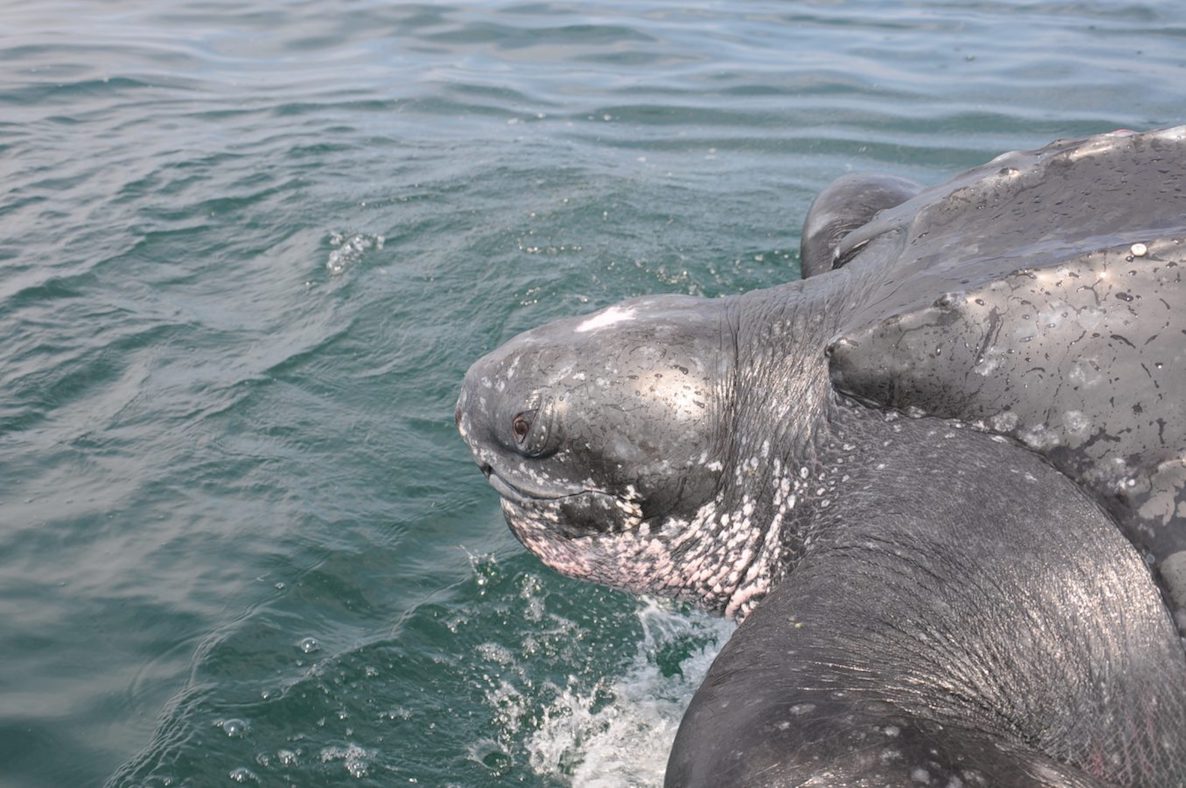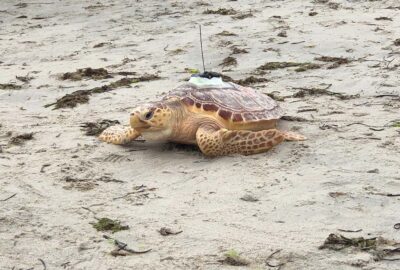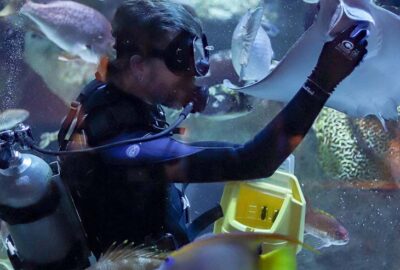Tracking a Leatherback Sea Turtle
The turtle, which was disentangled from fishing gear off Sandwich, MA, in September, is being tracked and studied by Dr. Kara Dodge, a turtle ecologist with the New England Aquarium’s Anderson Cabot Center for Ocean Life, and her colleagues.
By New England Aquarium on Friday, December 06, 2019

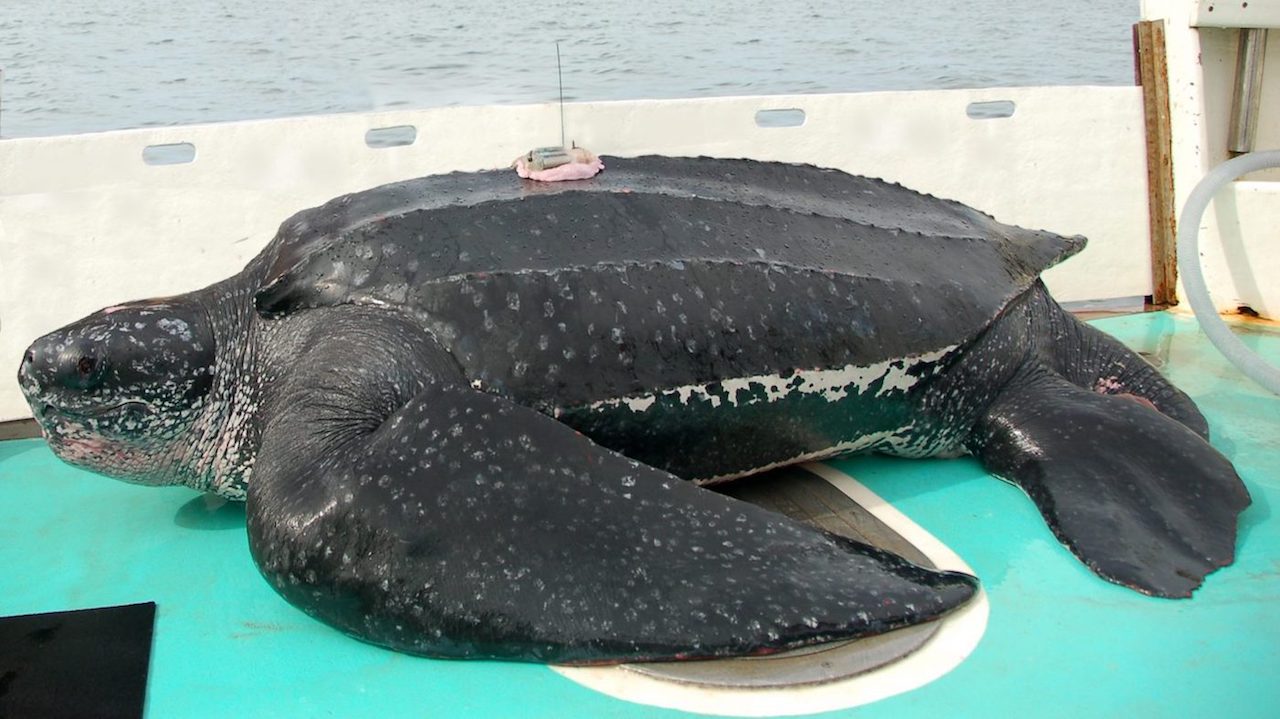
All sea turtles, including leatherbacks, need to be researched more in New England and beyond as little is known about their life history, so every encounter with a sea turtle is an opportunity to learn as much as possible.
To better understand and protect these sea turtles, Dodge, who specializes in leatherback sea turtles, affixes a variety of tags to their shells. Satellite tags can last up to a year and relay real-time data about the turtle’s location and depth. Acoustic tags send coded pings to acoustic receivers (e.g., listening stations) in the field, and can last for three to 10 years, depending on battery size. Animal-borne camera tags capture detailed turtle behaviors over shorter time scales. Working with leatherback sea turtles – the largest sea turtle species, adult leatherback sea turtles can weigh more than 1,000 pounds – can be daunting.
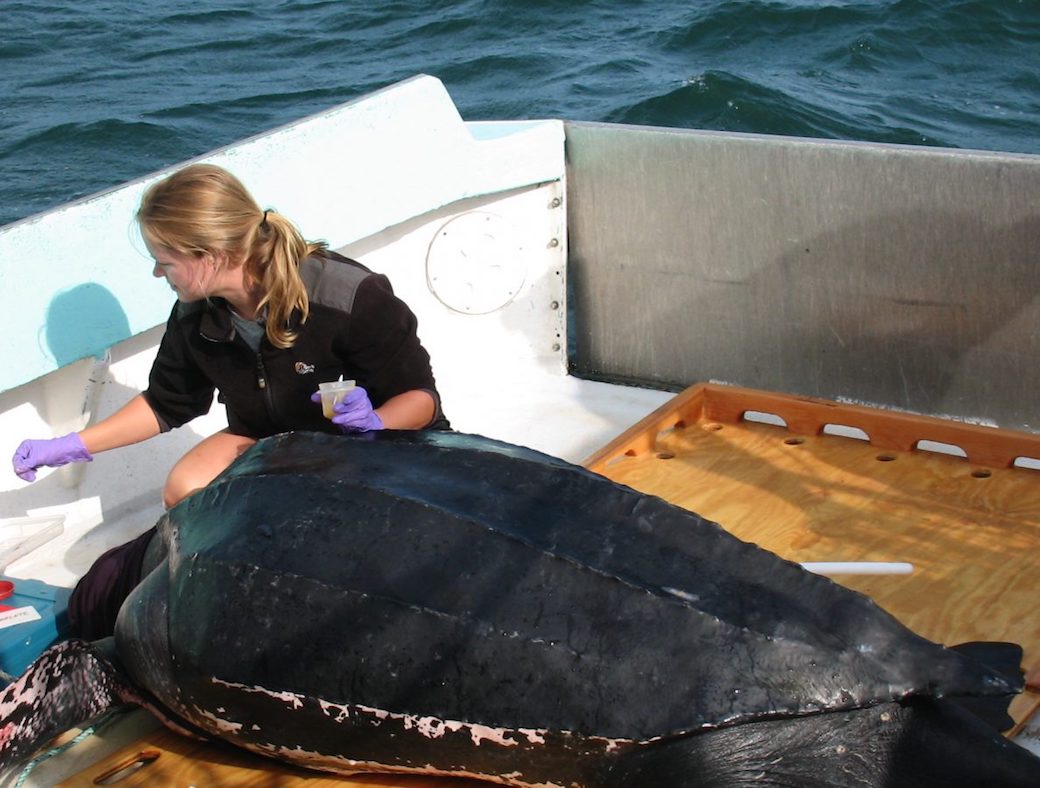
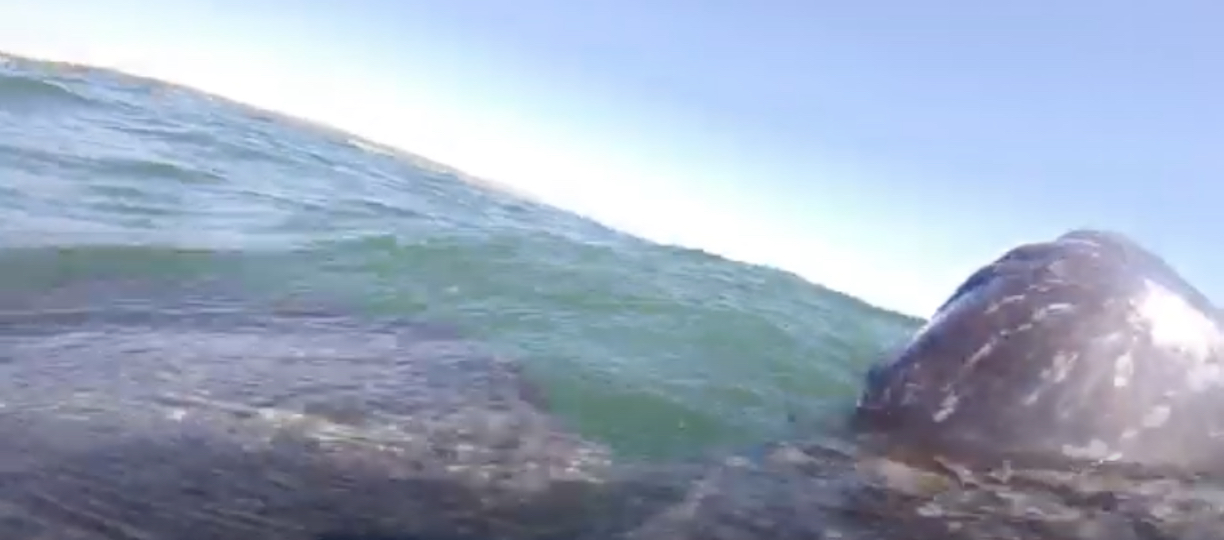
Leatherback sea turtle eating and breathing
Credit: Kara Dodge / NMFS Permit #15672
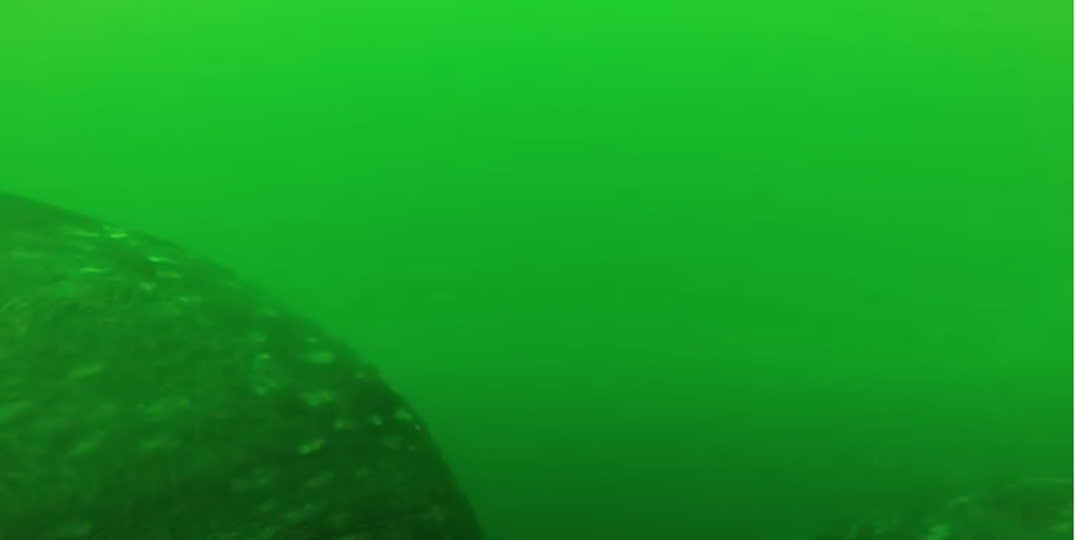
Leatherback sea turtle eating
Credit: Kara Dodge / NMFS Permit #15672
Summer to early fall is peak field season for Dodge and the other members of the capture team, which includes Dr. Charles Innis, the Aquarium’s head veterinarian, and Connie Merigo, manager of the Aquarium’s rescue and rehabilitation department and a senior biologist.
“It’s still thrilling every time we go out on the water and see a leatherback come to the surface,” says Dodge. “That never gets old.”
Tagging is just one technique Dodge uses to study sea turtle behavior in New England and other ocean environments. Another technique is the TurtleCam, a Woods Hole Oceanographic Institution (WHOI) project from Dodge’s postdoctoral studies that has since become an Aquarium favorite.
Dodge collaborated with WHOI Research Engineer and TurtleCam developer Amy Kukulya to follow and film leatherback sea turtles with a “smart” autonomous underwater vehicle (AUV). The AUV follows the turtle via transponder, tracking it in three dimensions while simultaneously filming the turtle and sampling its environment while the transponder camera captures the turtle’s perspective. The result is a holistic view of a turtle’s life for up to eight hours at a time.
TurtleCam has recorded a wide variety of behaviors, including high feeding rates (over 60 sea jellies eaten per hour!), hunting strategies, and interactions with other marine life. The AUV also tells researchers where the turtles spend most of their time, information that’s critical for understanding threats.
For Dodge, observing the behavior of turtles in their natural environment also provides insight into how turtles respond to fishing entanglements and other human impacts. A collaborator on international research efforts, she works to understand how climate change, marine plastic, bycatch, and vessel traffic affect sea turtle populations globally.
“Getting a glimpse into a turtle’s daily life makes you realize that even without all the human impacts, which are obviously a lot, the natural world is tough enough,” Dodge says. “It’s not easy to make a living as a sea turtle.”
Thankfully, scientists like Kara are dedicated to understanding and protecting these marine reptiles.
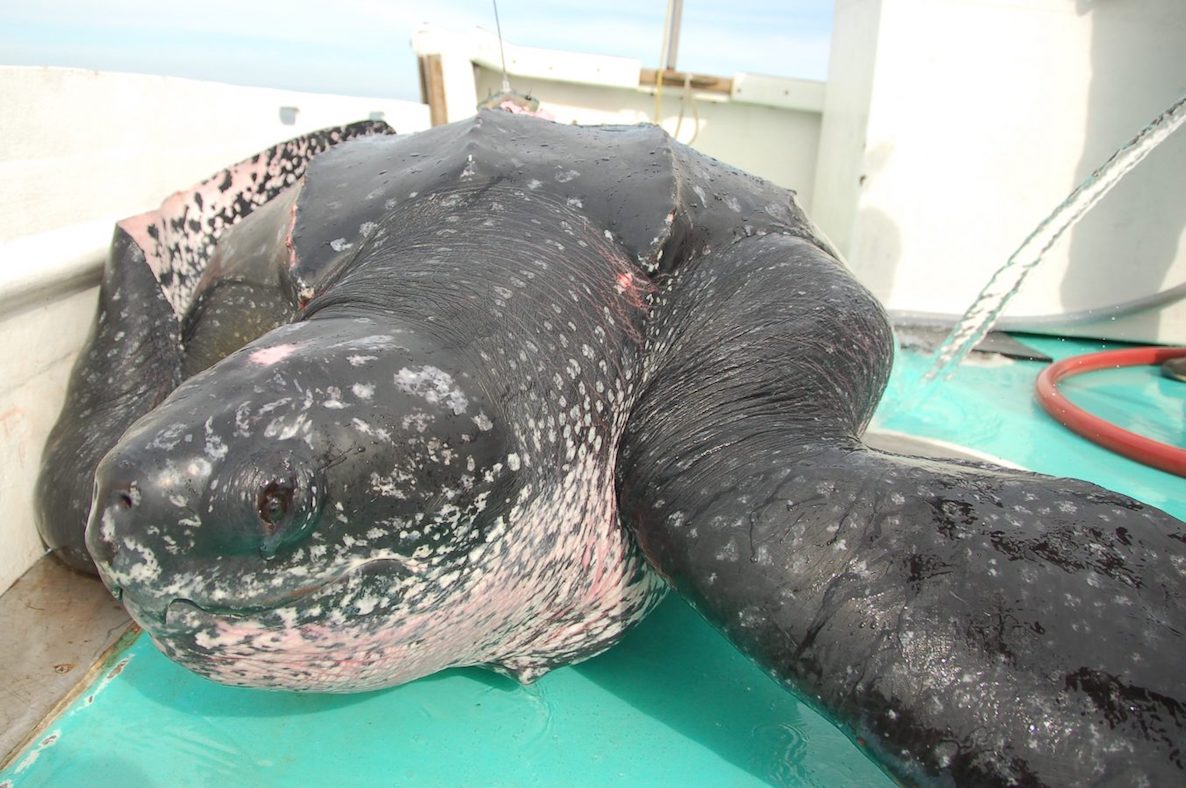
Learn more about Dr. Kara Dodge’s work
Conservation Context
The world’s seven species of sea turtles have roamed the oceans for hundreds of millions of years. But today, most of these species are endangered and all are threatened due to unprecedented threats from humans, including fishing bycatch, entanglement, boat strike, poaching, loss of nesting habitat, pollution, oil spills, and climate change.
